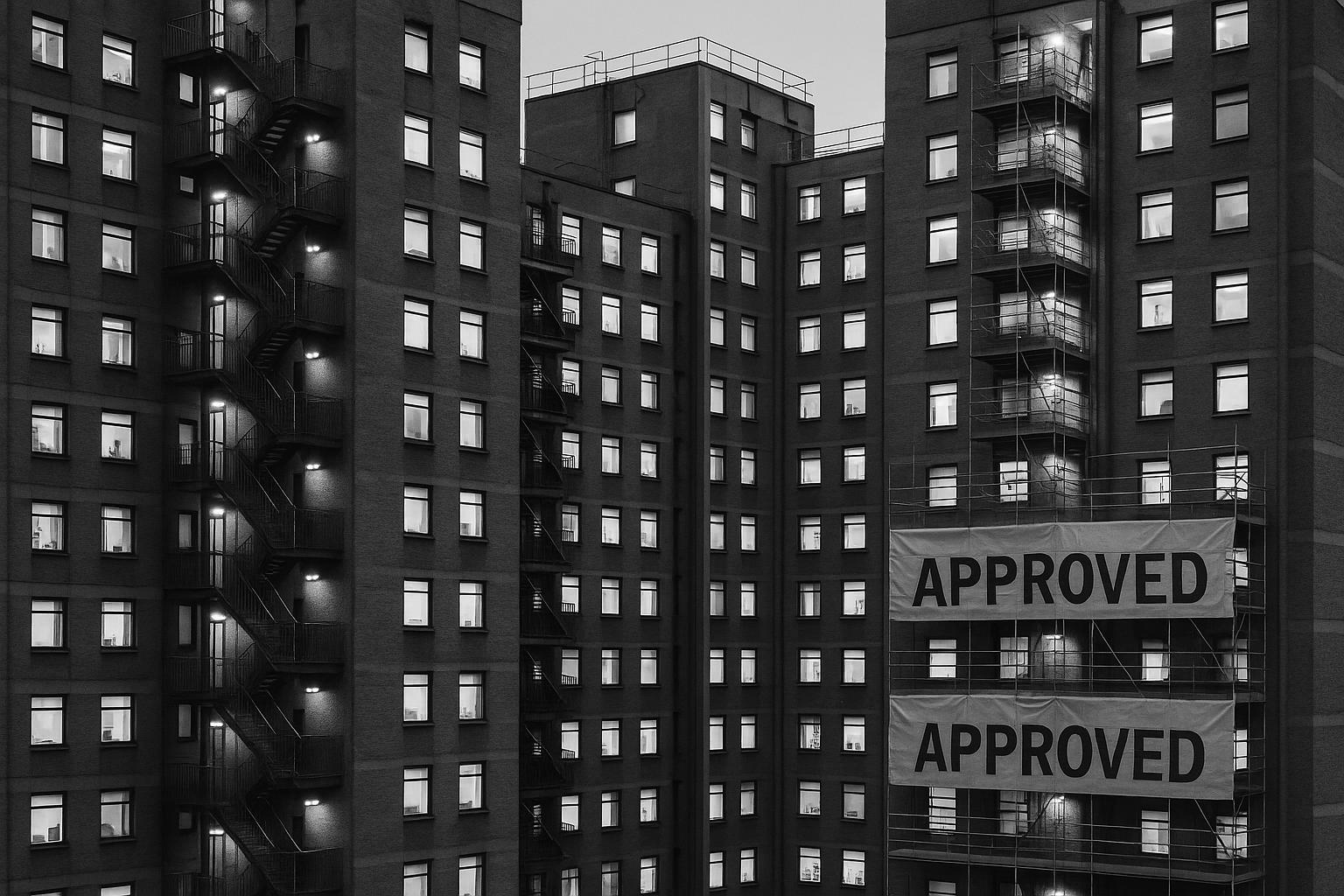Lichfields analysis shows over 26,000 purpose‑built student bedrooms approved since 2021 — equivalent under GLA methodology to more than 10,500 conventional homes — offering a timely boost amid a slump in mainstream housing delivery, but rising PBSA rents and investor consolidation risk undermining affordability benefits.
London’s pipeline of purpose‑built student accommodation (PBSA) has received a timely boost, with a national planning consultancy finding that more than 26,000 student bedrooms have won approvals across the capital since 2021. According to Lichfields’ new insight, a surge in planning activity through 2024 and into the first quarter of 2025 means those approved PBSA rooms are, under the Greater London Authority’s methodology, equivalent in housing need terms to more than 10,500 conventional homes — a significant contribution at a moment when traditional housing delivery has stalled.
That context is crucial. Industry data show planning permissions for new homes in England fell to a record low in 2024, leaving conventional housing supply notably constrained and lending relative economic advantage to PBSA schemes. Lichfields’ analysis frames PBSA as one of the few residential products that remain financially viable for developers in the current market, offering a route to bring forward new residential floorspace when family‑sized and market housing permissions are in retreat.
Policy settings have helped make that possible. The GLA’s London Plan policy for student accommodation explicitly recognises PBSA as making a contribution to overall housing need, applying a 2.5:1 equivalence for non‑self‑contained student bedrooms and setting out expectations for affordable student rooms and nomination agreements. Lichfields finds that the GLA’s broad support, combined with a flexible approach taken down to borough level, has eased the planning path for schemes — even in the absence of a single design‑led planning framework for PBSA.
Yet growth in approvals comes with an uncomfortable affordability picture. The Unipol and HEPI Accommodation Costs Survey 2024: London Edition documents sharp rises in student rents — an 18% increase in PBSA rents over two years and a worrying number of rooms costing more than £20,000 a year — and warns that average rents in London now exceed the maximum maintenance loan for many students. Lichfields notes a growing trend for PBSA proposals to incorporate affordable rooms and nomination agreements, but industry and campaign groups caution that market‑led development alone will not close the widening affordability gap.
The market dynamics that make PBSA attractive to developers also draw investor interest. Financial reporting and sector analysis point to a flurry of deals and higher levels of institutional capital targeting the student housing sector, viewed as offering resilient income streams and countercyclical stability relative to conventional residential assets. At the same time, commentators have flagged consolidation in the sector and rising rents as risks that could erode social value if not managed through planning obligations or public‑sector partnership.
Speaking to Building, Design & Construction Magazine, Jonathan Hoban, Associate Director in Lichfields’ London office, said: “Purpose‑built student accommodation plays a critical role in meeting housing need and supporting London’s global education offer. The research identifies a healthy pipeline of schemes with approval which should translate into deliveries.” He added that, given the poor backdrop for conventional housing, PBSA “not only ensures London remains a leading destination for higher education but it could help deliver more affordable homes. It could be a win‑win situation for London.”
Lichfields and the GLA guidance both urge that the momentum be sustained by the next London Plan, due in 2027, through continued flexibility and active encouragement of well‑designed PBSA. The legislation’s Fast Track route and provisions around securing at least a share of affordable student bedrooms via nomination agreements are singled out as practical levers that boroughs and the mayor could use to ensure growth translates into wider housing benefits.
If approvals are to deliver on their promise, however, policy and market actors will need to address three linked challenges: ensuring that schemes genuinely expand affordable supply rather than simply adding high‑cost rooms; preserving design and amenity standards so PBSA supports mixed, inclusive neighbourhoods; and maintaining investor confidence while steering outcomes that relieve pressure on the private rented sector. According to the report and recent sector surveys, striking that balance will determine whether the current pipeline provides a short‑term boost to housing figures or a lasting contribution to London’s housing needs.
 Reference Map:
Reference Map:
Reference Map:
- Paragraph 1 – [1], [2]
- Paragraph 2 – [1], [2], [5]
- Paragraph 3 – [2], [4], [1]
- Paragraph 4 – [6], [2], [1]
- Paragraph 5 – [7], [2]
- Paragraph 6 – [1], [2]
- Paragraph 7 – [2], [4], [1]
- Paragraph 8 – [2], [6], [5], [7]
Source: Noah Wire Services
- https://bdcmagazine.com/2025/08/student-housing-approvals-offer-boost-to-londons-housing-targets-new-research-finds/ – Please view link – unable to able to access data
- https://lichfields.uk/content/insights/unlocking-london-s-student-housing-potential – Lichfields’ ‘Unlocking London’s student housing potential’ insight examines the scale and planning dynamics of purpose-built student accommodation (PBSA) in London. Published August 7, 2025, it highlights a growing pipeline of PBSA schemes, analyses policy frameworks including the GLA’s PBSA guidance and London Plan H15, and considers developer and investor responses to recent market conditions. The report discusses how PBSA can contribute to housing targets using the GLA’s 2.5:1 equivalence, reviews affordability and nomination agreements, and recommends that the next London Plan sustain flexible, design-led approaches to accelerate delivery and encourage balanced development.
- https://bdcmagazine.com/2025/08/student-housing-approvals-offer-boost-to-londons-housing-targets-new-research-finds/ – This BDC Magazine article reports on Lichfields’ research finding that London approved over 26,000 student bedrooms since 2021, noting a surge in approvals during 2024 and early 2025. It explains that under GLA methodology these PBSA bedrooms equate to more than 10,500 conventional homes, and highlights trends of PBSA schemes incorporating affordable rooms and nomination agreements. The piece situates PBSA as one of the few viable residential products amid weak conventional housing permissions, cites Jonathan Hoban’s comments on PBSA’s role in meeting housing need and sustaining London’s higher education offer, and directs readers to the full Lichfields report for context.
- https://www.london.gov.uk/programmes-strategies/planning/london-plan/the-london-plan-2021-online/chapter-4-housing – The Greater London Authority’s London Plan H15 sets out strategic policy for purpose-built student accommodation (PBSA). It confirms PBSA contributes to London’s housing need and establishes rules for affordable student accommodation, nomination agreements and a Fast Track Route requiring at least 35% affordable student bedrooms to qualify. The Plan counts non-self-contained student bedrooms towards housing targets on a 2.5:1 ratio, explains design and location expectations, and encourages boroughs to secure affordable student rooms via agreements. H15 frames PBSA as part of mixed, inclusive neighbourhoods and underpins the GLA guidance referenced by planners and developers across London in policy and practice.
- https://www.bbc.com/news/articles/cvgp51d7zy2o – A BBC analysis published March 20, 2025 reports that planning permissions for new homes in England fell to a record low in 2024, the lowest full-year figure since records began in 1979. The story highlights a sharp decline in the number of housing projects granted permission, regional variations with London among the hardest hit, and commentary from industry experts about developer caution and systemic obstacles. It links the fall to policy uncertainty and market conditions, and notes government ambitions to boost housing supply. The piece provides authoritative statistical context for claims that conventional housing permissions remain greatly reduced across England.
- https://www.unipol.org.uk/news/average-student-rents-in-london-overtake-the-maximum-maintenance-loan-the-2024-accommodation-costs-survey/ – The Unipol and HEPI ‘Accommodation Costs Survey 2024: London Edition’ finds that average student rents in London now exceed maximum maintenance loans, with PBSA rents rising sharply and an affordability gap widening. The report documents an 18% rise in PBSA rents over two years, notes that significant numbers of rooms cost more than £20,000 annually, and shows sustained demand amid constrained supply. It warns that students are being priced out, underscores the need for affordable PBSA, and recommends policy and funding measures to make accommodation more accessible and to support the London Plan’s aims for affordable student housing in future.
- https://www.ft.com/content/8903fd8e-3ca5-4fb5-9092-77fc29faefed – The Financial Times article analyses growing investor interest in the UK student housing sector, noting a surge in deals and new PBSA schemes despite broader pressures on higher education. It highlights record transactions and developer activity, cites examples of large-scale investments and conversions including London projects, and explains why PBSA remains attractive: steady demand, resilient income streams and relative viability compared with conventional housing. The piece discusses affordability concerns, rising rents, and sector consolidation, presenting PBSA as a countercyclical asset that continues to draw capital while the outlook remains cautious.
Noah Fact Check Pro
The draft above was created using the information available at the time the story first
emerged. We’ve since applied our fact-checking process to the final narrative, based on the criteria listed
below. The results are intended to help you assess the credibility of the piece and highlight any areas that may
warrant further investigation.
Freshness check
Score:
8
Notes:
The narrative presents recent findings from Lichfields, dated August 2025, indicating a surge in student housing approvals in London since 2021. The earliest known publication date of similar content is November 2024, when Lichfields discussed the GLA’s PBSA London Plan Guidance. The report is based on a press release from Lichfields, which typically warrants a high freshness score. No discrepancies in figures, dates, or quotes were found. The content appears original, with no evidence of being republished across low-quality sites or clickbait networks. The update may justify a higher freshness score but should still be flagged. ([lichfields.uk](https://lichfields.uk/blog/2024/november/28/lichfields-view-on-the-new-gla-pbsa-london-plan-guidance-october-2024?utm_source=openai))
Quotes check
Score:
9
Notes:
The direct quote from Jonathan Hoban, Associate Director at Lichfields, appears to be original, with no identical matches found online. This suggests potentially original or exclusive content.
Source reliability
Score:
9
Notes:
The narrative originates from Building, Design & Construction Magazine, a reputable industry publication. The report cites Lichfields, a well-established national planning consultancy, enhancing the credibility of the information presented.
Plausability check
Score:
8
Notes:
The claims regarding the surge in student housing approvals in London since 2021 are plausible and align with recent industry trends. The report references multiple reputable sources, including the Greater London Authority’s London Plan and the Unipol and HEPI Accommodation Costs Survey 2024: London Edition, supporting the narrative’s credibility. The tone and language are consistent with typical industry reporting, and there are no signs of excessive or off-topic detail unrelated to the claim.
Overall assessment
Verdict (FAIL, OPEN, PASS): PASS
Confidence (LOW, MEDIUM, HIGH): HIGH
Summary:
The narrative presents recent and original findings from a reputable source, with no significant discrepancies or signs of disinformation. The plausibility of the claims is supported by references to credible sources, and the content is consistent with industry reporting standards.













